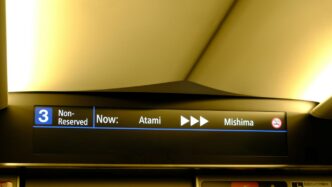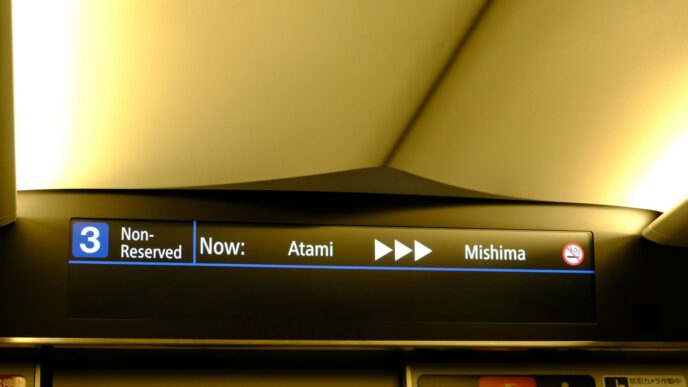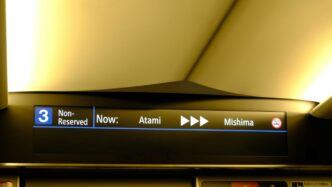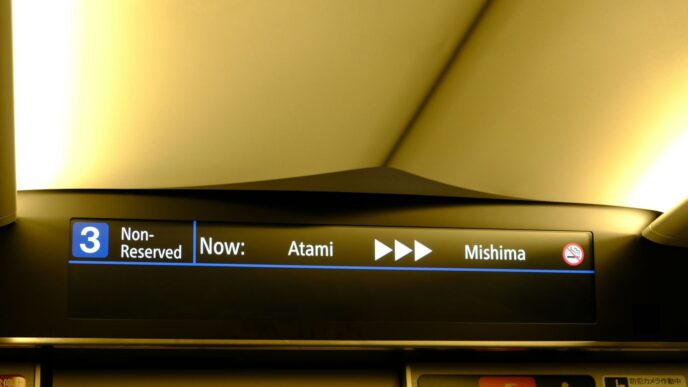Trying to figure out the WARN Act New York rules for 2025 can feel overwhelming, especially if your business is facing big changes. The law has some clear steps for when and how you need to tell workers about layoffs, plant closings, or moving your operations. With new updates on things like AI-related layoffs and longer notice periods, it’s more important than ever to get it right. Here’s a breakdown of what employers in New York need to know to stay on track and avoid headaches down the road.
Key Takeaways
- The WARN Act New York covers businesses with 50 or more employees and has lower thresholds than federal law for triggering notice requirements.
- Employers must give at least 90 days’ written notice to workers and state agencies before mass layoffs, plant closings, or major relocations over 50 miles.
- Recent changes for 2025 require employers to state if layoffs are connected to AI, and update who gets notified and what’s included in the notice.
- Some layoffs are exempt from WARN, like those caused by natural disasters, finishing a project, or seasonal jobs.
- Keeping clear records and following the latest rules is key to avoiding penalties and making the process smoother for everyone involved.
Key Triggers for WARN Act New York Compliance

Understanding the main triggers that set off New York’s WARN Act requirements is key for any employer in the state. If you cross certain thresholds for employees, layoffs, or business moves, strict notice rules apply. Here’s how it breaks down:
Thresholds for Covered Employers
To fall under the New York WARN Act, your business must have enough employees:
| Requirement | New York WARN Act |
|---|---|
| Minimum Employees | 50+ workers (including part-timers) |
- Businesses with fewer than 50 employees are not covered at all.
- The count includes both full-time and part-time staff working across all business locations in New York.
- Temps and contractors usually do not count toward this total unless they’re directly employed.
Plant Closures and Mass Layoffs
Employers are required to issue WARN notices in the following situations:
- Plant Closings: If you shut down a site of employment and it results in 25 or more employees losing their jobs (within a 30-day timeframe).
- Mass Layoffs: If 25 or more full-time employees, or at least 25% of your workforce (whichever number is greater), are laid off in a 30-day period. For larger companies, the rule also triggers if 250 employees are affected, even if it’s less than 25% of your workforce.
- Employees affected at more than one site might be counted together if job losses are part of a larger, related action.
Requirements for Relocations
If your company is relocating significant operations, here’s what you need to know:
- A WARN notice is required if the move takes jobs more than 50 miles from the current location.
- This rule applies even if the relocation is temporary or intended to be permanent.
- Notice must be given to employees, their representatives, the New York State Department of Labor, and local workforce boards.
In short, the law covers a lot more ground in New York than the federal rule does, so you can’t assume you’re safe if you only follow the federal WARN Act. Stay aware of these triggers to avoid any compliance headaches.
Defining Layoffs, Closures, and Other Covered Events Under New York WARN
Understanding precisely what triggers duties under New York’s WARN Act makes all the difference if you’re running a business in the state. While many folks think it’s just about large-scale layoffs, the rules go beyond that. Let’s walk through what counts as a covered event and where the lines get drawn in 2025.
Plant Closure Definitions and Scenarios
A "plant closure" in New York means shutting down a site that employs at least 50 workers during any 30-day period. It doesn’t have to be a big manufacturing facility—it could be any type of workplace. Even closing a single department or division might count if it meets the numbers.
Common plant closure scenarios:
- Full shutdown of a warehouse, store, or office employing 50+ people
- Ending a major division at corporate headquarters that puts 50+ out of work
- Permanently ending operations at a remote job site
Here’s a snapshot for quick reference:
| Event Type | Triggers NOTICE When… |
|---|---|
| Plant Closure | 50 or more employees lose jobs (30 days) |
| Partial Closure | Department with 50+ shut down |
Mass Layoff Criteria Explained
Mass layoffs have their own rules, separate from closures. The state looks at both percentages and absolute numbers over a defined period. Layoffs count as a mass event if, in a 30-day stretch:
- At least 25 full-time employees (or more than 250 total) are let go
- The layoff impacts 25% or more of the employer’s workforce
Example table for clarity:
| Workforce Size | Threshold for Mass Layoff |
|---|---|
| 100 | 25 employees (25%) |
| 300 | 75 employees (25%) or 250+ |
These numbers matter even if layoffs happen in several chunks over a month.
Remote Workers and Site Assignments
With so many people working remotely now, the New York WARN Act gets a little more specific for 2025. Remote workers are counted as working at their assigned base site—not at home or wherever their laptop happens to be. This means:
- If remote employees report to a New York office, they’re included in that location’s layoff figures
- Changing the base site could impact whether WARN is triggered (for a rundown of other business rules, see website terms and conditions)
- Layoffs spread across multiple sites require checking the numbers at each site for compliance
Employers need to track site assignments for remote folks carefully, as it influences how compliance obligations play out.
In short, the New York WARN Act doesn’t only apply to big brick-and-mortar shutdowns. Coverage now stretches to closures, various types of layoffs, and even remote worker scenarios—all shaped by the number and percentage of people affected. Double-check headcounts, locations, and layoff plans to avoid issues.
Notice and Documentation Obligations for WARN Act New York
When layoffs or closings happen, employers in New York have strict rules to follow about warning people ahead of time. Missing these obligations can absolutely land a company in hot water, either through fines or costly lawsuits. Here’s what employers should know and do when it comes to giving notice and keeping records under New York’s WARN Act, especially with updated rules.
Content and Format of Warning Notices
The notice itself must be written and contain specific details. It’s never enough to just tell people verbally or put a note on someone’s paycheck stub. Here’s what needs to go into that letter:
- Whether the layoff or closure is permanent or temporary
- The exact date(s) when layoffs will start
- The last day people are expected to work
- Contact info in case employees have more questions
- The reason for the layoff, closure, or relocation
- The names and job titles of affected workers (or numbers by category)
- Availability of resources, such as career counseling or retraining
Notices should be clear, direct, and respectful. The letter should explain what’s happening, who’s impacted, when changes take effect, and how to get more information.
Notice Delivery and Recordkeeping
How notices are given out, and what happens to those notices, matters a lot for compliance. Employers have to:
- Provide written notice at least 90 days before layoffs, closures, or major relocations begin (not 60—as federal law requires).
- Deliver notices to all required recipients at the same time—no delayed or staged announcements.
- Keep copies of every notice sent and maintain records of who received them for several years. This way the company can prove compliance if the Department of Labor investigates.
Here’s a quick table showing how long certain records should typically be kept:
| Record Type | Recommended Retention Period |
|---|---|
| Written WARN Notice | 3 years |
| Delivery receipts (mail etc.) | 3 years |
| Employee addresses | 3 years |
This isn’t just paperwork for paperwork’s sake—having these on hand helps defend the company if anybody challenges the way the layoffs went down.
Recipients of WARN Notices
The state doesn’t just want employees to know—they want everyone impacted or involved to be in the loop. WARN notices need to go to:
- Affected employees (including remote staff counted at their base site)
- Employee representatives or labor unions
- The New York State Department of Labor
- The chief elected officials of the local community (mayor, town supervisor, etc.)
- Local Workforce Investment Boards
That sounds like a lot, but skipping even one recipient can jeopardize the whole layoff process, possibly resulting in extra penalties and setbacks.
Going through this early (well before the 90-day window begins) is worth the hassle. People may not like the news, but they’ll appreciate having clear communication and enough time to figure out their next steps.
Recent Updates and Legislative Changes to New York WARN Act for 2025
New York’s WARN Act keeps changing. 2025 brought some new twists that every employer should know about. Let’s break down the latest updates in language that won’t make you reach for a legal dictionary.
Enhanced AI Layoff Disclosure Requirements
Out of nowhere, AI has become a big part of company layoffs. In response, New York now requires employers to specifically disclose if artificial intelligence played a role in workforce reduction decisions. Here’s what this section of the notice needs to include:
- Whether automated systems or algorithms were involved in identifying jobs for elimination.
- A brief description of the technology used for decision support.
- Contact information for a person who can answer questions about the technology’s use.
For context, this step comes on the heels of rising concerns about transparency whenever tech gets involved in tricky employment calls.
Revised Notice Periods and Recipients
2025 officially locked in the longer advance warning for layoffs:
- Minimum notice period: 90 days (still longer than federal law’s 60 days).
- Who gets notified?
- All impacted employees
- Any employee representatives or unions
- The New York Department of Labor
- Local Workforce Investment Boards
- Local government officials
Here’s a simple table for comparison:
| Law | Notice Period | Who Must Get Notified |
|---|---|---|
| Federal WARN | 60 days | Employees, representatives, local/state governments |
| NY WARN (2025) | 90 days | Employees, reps, NY DOL, workforce boards, local officials |
One of the big changes also affects recordkeeping. Notices must be delivered in writing—no more "heads-up" announcements or rely-on-pay stubs. Keep a digital or physical record for at least three years, as inspection requests are more likely now.
Impact of Policy Changes on Employers
The recent amendments set a higher bar for compliance. Employers now must:
- Track remote workers by their "base of employment," not just home addresses.
- Adjust relocation policies, since moves over 50 miles trigger notice requirements.
- Report in detail on technology influences during group layoffs.
This means HR teams should review existing policies, update their communication templates, and perhaps budget for extra legal review—especially if your operation involves automation, remote teams, or frequent restructuring.
Last year’s budget reflected a $10.3 billion increase over the Executive’s proposal, and with numbers like these, regulatory oversight won’t be slowing down. Staying on top of these changes means fewer surprises and a better shot at keeping operations running smoothly—even when tough choices have to be made.
Major Exceptions to WARN Act Obligations in New York

Employers might assume every layoff or plant closing in New York requires strict WARN compliance, but there are some pretty clear exceptions built into the law. If you fall into one of these unique categories, the usual 90-day notice rule might not be necessary. Here’s a closer look at situations where WARN notice obligations in New York don’t apply.
Natural Disaster and Unforeseeable Circumstances
Sometimes, life throws curveballs no one could’ve seen coming. If a layoff, closure, or relocation happens because of natural disasters (think hurricanes, floods, or earthquakes) or other unforeseeable events like acts of war, the WARN Act usually doesn’t require advance notice. Here are the main points:
- No notice required for closures caused by natural disasters or acts of war
- Applies to both plant closures and mass layoffs
- Employers still need to show the event directly caused the job loss
The law actually has a few specified exceptions for unique types of work, such as manufactured homes under certain residential codes, so it’s important to check if your situation matches up.
Capital or Business Pursuit Exemptions
For companies that are actively trying to raise new capital or win critical business contracts, there might be a break. This exemption covers plant closings (not mass layoffs) where giving prior notice could ruin the chances of getting the money or contracts needed to keep operating. Here’s what to know:
- Applies only when employers are honestly trying to secure funds or business
- Must affect the plant closure decision—not valid for mass layoff situations
- Still requires providing as much notice as is feasible
Documentation for these cases needs to be sent to the New York Department of Labor ahead of time. They’ll decide if your circumstances really qualify. This is much more strict than some federal rules—New York expects a lot of supporting evidence you were legitimately pursuing new options.
Project Completion and Seasonal Employment
Not all jobs are expected to last forever. If you’re in construction, mining, certain manufacturing areas, or any industry where the end of a particular project or season naturally means layoffs, the WARN Act steps back. Here are the basics:
- Jobs clearly intended to end when a project finishes are not covered
- Seasonal jobs, as long as they’re defined up front as temporary, don’t trigger WARN obligations
- Applies mostly in industries like construction, drilling, logging, mining, and some manufacturing
Employers must make the temporary or project-based nature of work obvious at hiring. If a job wasn’t labeled as short-term, the exception might not apply.
Common Exceptions Table
| Exception Type | Applies To | Notice Requirement |
|---|---|---|
| Natural Disasters & War | Closures, Layoffs | No 90-day notice |
| Capital/Business Pursuit | Plant Closures only | Shorter/limited notice |
| Project Completion | Project Roles | No 90-day notice |
| Seasonal Employment | Seasonal Workers | No 90-day notice |
When layoffs or closures don’t fit these scenarios, regular WARN rules kick back in. Keep clear records, as New York expects employers to document exactly why an exception applies. If there’s any doubt, consult the Department of Labor before moving forward.
Comparing Federal and New York WARN Act Requirements
When companies think about layoffs or plant closures, both federal and New York WARN Acts might kick in. While the two laws have the same basic goal—giving employees fair warning—New York’s rules go further in a few very real ways. Here’s what employers should know as of 2025.
Employee Threshold Differences
- The federal WARN Act kicks in when a business has at least 100 employees (excluding certain part-timers).
- New York’s WARN Act starts to apply to companies with just 50 employees, including remote workers who are assigned to a New York location.
- So, more New York employers are covered under state law, even those not covered by federal WARN.
| Requirement | Federal WARN Act | NY WARN Act |
|---|---|---|
| Employee Threshold | 100+ employees | 50+ employees |
Notice Period Discrepancies
- Federal law requires a 60-day written notice before a covered plant closing or mass layoff.
- In New York, the notice period is longer: 90 days. Missing this window can lead to fines and back pay liability.
- Both laws require written notice, not just an announcement in a meeting or a blurb on a pay stub.
| Requirement | Federal WARN Act | NY WARN Act |
|---|---|---|
| Notice Period | 60 days | 90 days |
Application to Relocations and Remote Workforces
- The federal WARN Act only occasionally applies to relocations, usually tied directly to plant closures.
- By contrast, the New York WARN Act is much clearer: If a business moves substantial operations over 50 miles away, that triggers the notice requirement.
- New York counts remote workers as being assigned to their main worksite, so they count in all the trigger math.
If you’re moving the business, closing, or letting people go, here’s a quick summary for New York employers:
- Count everyone—even those working at home—if they report to your NY site.
- New York’s rules kick in sooner and affect smaller employers than federal.
- Always put WARN notices in writing and send copies to the state and local workforce agencies, not just employees.
These gaps mean missing a state-specific rule could sting. Always double-check the math and consult the up-to-date state guidance before making any announcements.
Action Steps for Employers Facing Layoffs in New York
If layoffs are looming for your company in New York, it feels overwhelming—especially with the strict rules now in place. Here’s what you need to do to stay on track and avoid major headaches down the line.
Ensuring Timely and Compliant Notices
Missing the notice deadline will land you in hot water—think fines and legal messes. Here’s a quick list to keep you organized:
- Figure out if WARN applies. Layoffs involving 25+ employees (or 25% of your workforce) at a single New York site trigger state requirements (which are stricter than federal).
- Prep a written notice that covers all the right details—whether the layoff is temporary or permanent, dates, and who’s affected.
- Notices need to go out at least 90 days before anyone’s last day. If you’re relocating, the same timeframe applies.
- Keep documentation of notice delivery for your records (email confirmations, signed receipts, etc.).
For tech and privacy, staying on top of broader legal compliance isn’t just about the WARN Act—adapting to evolving laws matters too, especially as digital business models change.
Coordinating With State and Local Agencies
You’re not just writing a letter to employees and calling it done—New York wants notices sent to:
- All affected employees
- Their union reps (if applicable)
- The New York State Department of Labor
- Local elected officials (for the municipality where job loss is happening)
It’s a pain, but failing here means possible extra penalties or delays in any business winddown.
Best Practices for Offboarding Processes
How you land this plane matters—people talk, and your reputation sticks:
- Offer as much severance or support as possible (think COBRA info, outplacement services, maybe resume help)
- Use clear, direct language in meetings or written messages—don’t sugarcoat but don’t be cold either
- Give staying staff updates and space to ask questions. Layoffs shake up everyone, not just those leaving
Here’s how a typical notice and support table might look:
| Requirement | New York State WARN Act | Federal WARN Act |
|---|---|---|
| Minimum Notice Period | 90 days | 60 days |
| Employee Threshold | 25 full-time or 25% staff | 50 full-time |
| Applies to Relocations | Yes (50+ miles) | Yes |
Running a layoff never feels right, but if you get the paperwork, notice, and communication right, you come out looking responsible—even if things are tough.
Conclusion
So, that’s the rundown on the New York WARN Act for 2025. The rules can feel a bit overwhelming, especially with the extra steps compared to the federal law. But if you keep the main points in mind—like the 90-day notice, the lower employee thresholds, and the new requirements for remote workers and relocations—you’ll be in a much better spot. It’s always a good idea to double-check the latest updates or talk to a professional if you’re unsure. Staying on top of these rules not only keeps your business out of trouble, but it also helps your team feel respected and informed during tough transitions. Layoffs are never easy, but following the law makes the process a little smoother for everyone involved.
Frequently Asked Questions
Who must follow the New York WARN Act?
The New York WARN Act applies to businesses with 50 or more employees. If your company is smaller than that, you do not have to follow these rules.
How much notice do employers have to give before a layoff or closure?
Employers in New York must give a written notice at least 90 days before a mass layoff, plant closing, or big relocation. This is longer than the federal rule, which is only 60 days.
What counts as a mass layoff or plant closure under New York law?
A mass layoff in New York is when more than 25% of workers, at least 25 full-time employees, or more than 250 people lose their jobs within 30 days. A plant closure is when a whole work site with 50 or more people shuts down.
Are there any exceptions to the WARN Act in New York?
Yes, there are exceptions. Employers do not have to give notice if the layoff or closure is caused by a natural disaster, the end of a special project, or if workers were hired for short-term seasonal jobs. There are also exceptions for businesses trying to get new funding.
Do remote workers count for WARN Act rules?
Yes. If remote workers are assigned to a work site in New York, they count toward the employee total for WARN Act coverage, even if they work from home.
What new changes are coming to the New York WARN Act in 2025?
Starting in 2025, employers must tell if layoffs are because of using artificial intelligence (AI) and follow updated rules for who gets notices and how long in advance. The law is also clearer about which workers are covered and what information employers need to share.














